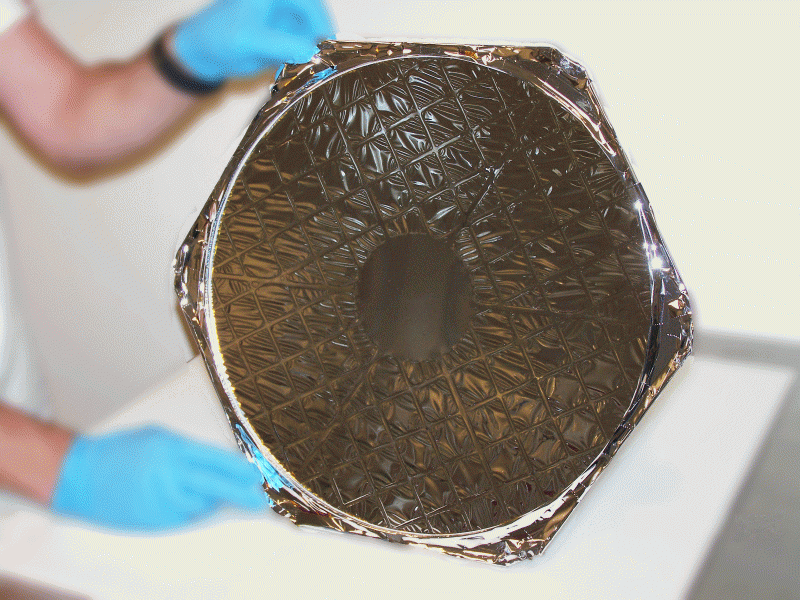Launched June 13, 2012, NASA’s Nuclear Spectroscopic Telescope Array, or NuSTAR, has captured it’s first images of a black hole in the high energy X-ray (5 – 80 keV) region of the electromagnetic spectrum. Surface Optics, in cooperation with ManTech International Corporation and it’s subsidiary NeXolve, developed the protective thermal covers in-use on the NuSTAR optics modules.

According to Craig et al. (2011), “to meet both operating range and gradient requirements, the entrance and exit apertures of the optics modules must be covered with a material that provides acceptable thermal and physical properties while maintaining transparency throughout the NuSTAR band.”1Employing advanced ion-assisted deposition technology, Surface Optics applied an X-ray transparent, solar-rejecting thermal control coating to ManTech’s NeXolve Novastrat® spin cast polyimide film.
Three weeks after launch, the thermal covers are performing at or above specification.
During it’s two-year primary mission phase the observatory will survey the most energetic objects in our universe, including super massive black holes, collapsed stars, supernova remnants, and high-energy gamma-ray sources. The NuSTAR instrument will see these objects with more than 100 times the sensitivity and 10 times the resolution of previous telescopes operating in the same wavelength range.
NuSTAR is a Small Explorer mission led by the California Institute of Technology and managed by NASA’s Jet Propulsion Laboratory, both located in Pasadena, for NASA’s Science Mission Directorate (Washington, D.C.).
For more information, see:
NuSTAR @ Caltech: http://www.nustar.caltech.edu/
NuSTAR @ NASA: http://www.nasa.gov/mission_pages/nustar/main/index.html
1 Craig, W. W., et al.,”Fabrication of the NuSTAR Flight Optics”, Proc. SPIE 8147, 15 (2011).
